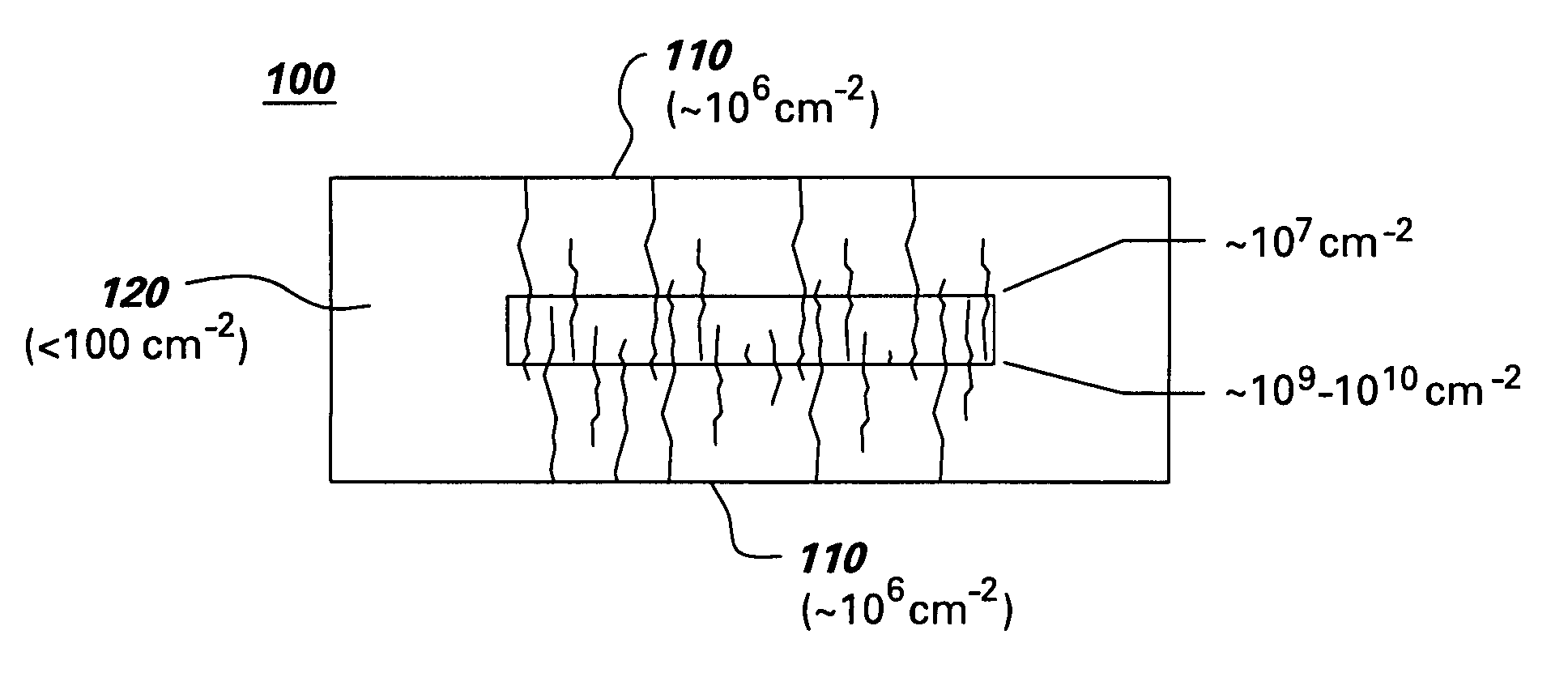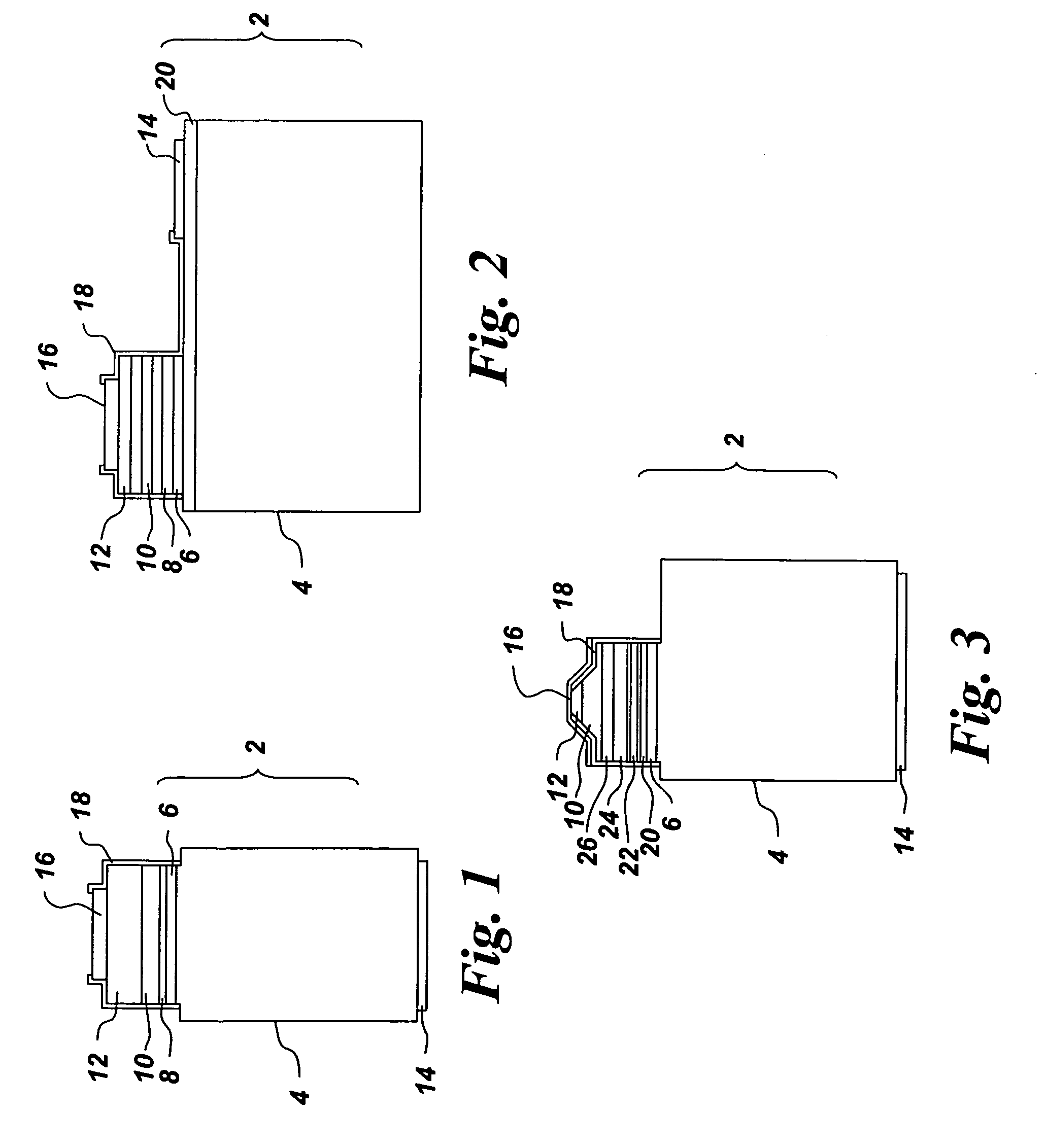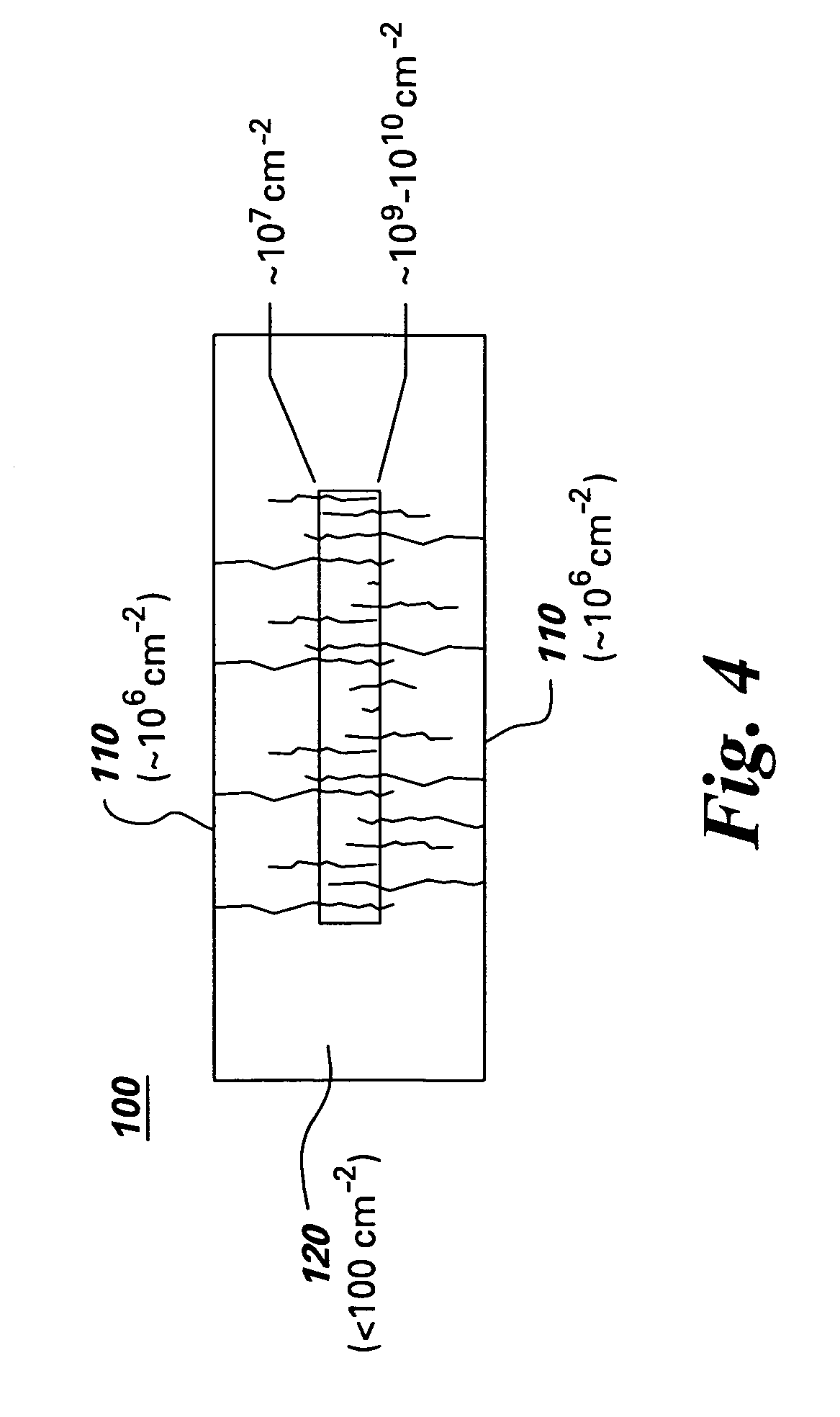Because high-quality GaN substrates have not been available, virtually all of the art has involved heteroepitaxial deposition of GaN and GaInAlN on
sapphire or SiC substrates.
The use of
sapphire substrates with a low-temperature buffer layer has a number of important limitations for manufacture of LEDs.
These dislocations can act as non-radiative recombination centers and may limit performance in certain applications, such as, for example, reducing
emission efficiency in near-
ultraviolet and
high power LEDs and LDs and reducing the lifetime in LDs.
Deposition of the low-temperature buffer layer also adds cost and complexity to the process.
Sapphire also has a large (45%) mismatch in the
thermal expansion coefficient with respect to GaN, which generates stresses in device structures upon cooldown from the
processing temperature and limits the
maximum size of wafers and thickness of epitaxial
layers that can be used without forming cracks.
Facets must be prepared at the ends of
laser diode structures in order to define the laser cavity, and the difficulty in cleaving c-axis-oriented sapphire makes
facet preparation more expensive.
The use of SiC substrates alleviates some of these limitations but introduces other problems.
The SiC
lattice mismatch to GaN is smaller than that of sapphire, but very high defect concentrations are still generated, and the use of low-temperature buffer films is still needed.
SiC is also much more expensive than sapphire.
Lower cost SiC is typically opaque, decreasing the efficiency of the LED device because light emitted from the active region toward the substrate would be absorbed rather than transmitted.
Some limited work has previously been carried out on forming homoepitaxial LED or LD devices on GaN substrates.
Therefore, the devices demonstrated by Pelzmann, et al. do not offer any performance advantages relative to conventional heteroepitaxial LEDs.
rate. This constitutes a large
disadvantage compared to conventional heteroepitaxial LEDs fabricated on sapphire or transparent SiC subst
2. This value is lower than the corresponding values in heteroepitaxial LEDs of approximately 107 to 1010 cm−2 but will still result in dislocations being present in large-area
thereupon. Additionally, the undoped GaN substrates employed by Kamp et al. have a rather limited carrier mobility, about 30–90 cm2 / V-s, which may be limiting in high-po
However, these crystals are semi-insulating, with an electrical resistivity of 104–106 Ω-cm at
room temperature, rendering them unsuitable as substrates for vertical light-emitting structures of one type described in the present invention.
These substrates have several additional disadvantages, including: (i) a
high concentration (approximately 1019 cm−1) of Mg and O atoms, each [J. I. Pankove et al., Appl. Phys. Lett. 74, 416 (1999)], which could potentially diffuse into device structures during high temperature
processing; and (ii) relatively poor
thermal conductivity.
A final but very important limitation of the method of Porowski et al. is that it does not appear to be scalable; that is, the method is incapable of producing GaN boules and wafers having diameters greater than or equal to 50 mm.
Because the process of Porowski et al. yields platelets rather than thick boules, the economies of scale associated with conventional
wafering technology (
slicing,
polishing) cannot be achieved.
In addition, strain is present in HVPE wafers due to the
thermal expansion mismatch between substrate and film.
This behavior will compromise the performance of light emitting devices operating in the
ultraviolet, as some of the light will be absorbed by the substrate rather than being emitted.
However, light emitting devices fabricated on ELO substrates typically have a surface area of at least about 104 μm2 (10−4 cm2) and still contain a substantial number of
threading dislocations.
Residual stress or strain in homoepitaxial GaN-based devices resulting, for example, from the presence of tilt boundaries, may accelerate the degradation of LDs or high-power LEDs.
Similarly, dislocations associated with tilt boundaries may reduce the lifetime of high-power light emitting diodes and laser diodes.
Dislocations may also increase reverse-bias current leakage, further degrading device performance.
Clearly, the presence of even a single
dislocation within a GaN-based light-emitting device can degrade its performance and / or lifetime.
Gallium nitride grown by all known methods contains native defects that may degrade the properties of the
crystal and of devices grown thereupon.
However, known GaN
crystal growth methods do not provide a means for passivating Ga vacancies by hydrogenation.
As with other ELO methods, coalescence of laterally-grown GaN will cause formation of tilt boundaries in these base
layers.
 Login to View More
Login to View More  Login to View More
Login to View More 


